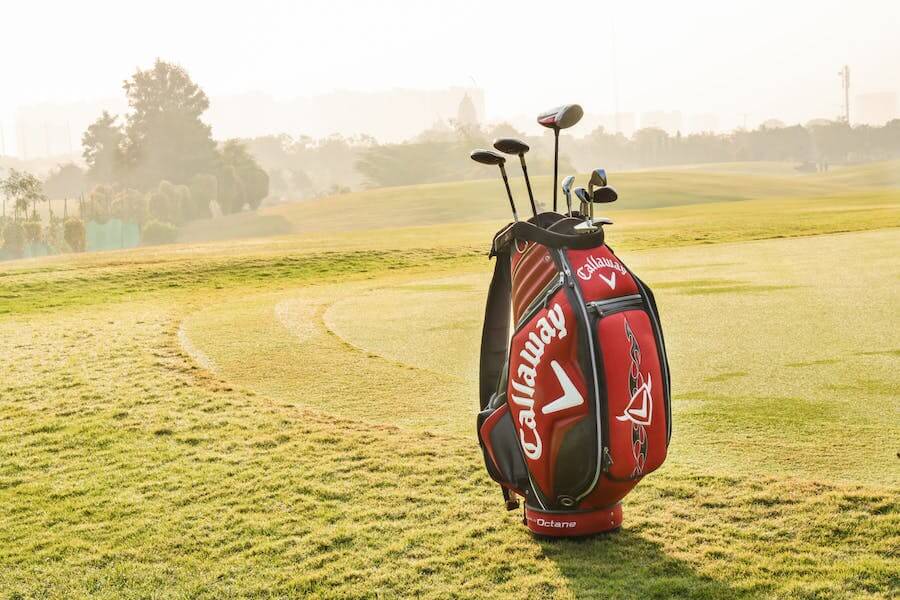How to Become a Professional Golfer – It’s Not Easy But is Possible!
Plenty of golfers dream about turning pro. For most, it’s a passing thought—hitting one pure iron or draining a long putt and imagining what it would be like to do this for a living.
For a small but determined group, that dream becomes a real pursuit.
But there’s a major difference between being a scratch golfer and being a professional.
Shooting under par at your home course doesn’t automatically translate to success on tour. The jump from elite amateur to full-time pro is steep, demanding, and filled with sacrifices—both on and off the course.
If you’re serious about making that leap, there are some things you need to understand. From what “professional golfer” really means, to the various paths available, to the often overlooked realities of tour life, this article will help you approach the journey with clear eyes to see if it’s something you may want to do.
Contents
The Difference Between a Professional Golfer and a Golf Professional
Before we talk about how to become a professional golfer, it’s important to clarify what that actually means.
In golf, the term “professional” gets used in two very different ways:
- A Professional Golfer plays the game for a living. Think PGA Tour, Korn Ferry, LPGA, DP World Tour—these players make their income from tournament winnings, endorsements, and appearance fees.
- A Golf Professional works in the golf industry. This includes coaches, instructors, head professionals at clubs, equipment fitters, and many others. They may play well, but they don’t compete professionally.
This is where confusion often comes in. Many golfers pursue a career in golf without ever trying to compete at the highest level. And that’s okay—there are a lot of ways to work in golf without being on tour.
If you’re more interested in becoming a coach or instructor, the PGA of America offers several pathways:
| PGA Pathway | What It Is |
|---|---|
| Traditional PGM | For those already working in golf. Includes a Playing Ability Test (PAT) and coursework over 3 levels. |
| University Program | A college-based program at 18 accredited universities. Includes a bachelor’s degree. |
| Affiliate Program | For those not yet employed in golf. Starts you on Level 1 of the PGM program. |
Each country has its own PGA system (Canada, UK, Australia, etc.), but the general idea is the same: you can build a golf career that doesn’t involve playing for prize money.
What Does it Take to Consider Becoming a Professional Golfer?
Being a scratch golfer is one thing. Being ready to play professionally is another.
If you’re thinking about chasing a professional golf career, the first question is simple, but tough: Are you good enough?
Here’s what that actually means:
- You embrace data and technology to improve. Professional golfers rely on tools like HackMotion to measure lead wrist flexion, clubface control, and wrist angles at key points in the swing.
- You can consistently shoot under par, not just once in a while, but round after round, especially away from your home course where you don’t have every advantage of knowledge etc.
- You have control of the clubface at impact. Your misses are small, predictable, and manageable, not big lefts or rights that blow up a round.
- Your short game holds up under pressure. You don’t just scramble, you convert. Putts inside 8 feet feel automatic, not stressful.
- Your mental game is competitive-level strong. You know how to reset after mistakes, handle nerves, and stay focused over 18 holes and 4-day events.
To bridge the gap from strong amateur to potential pro, train with an experienced golf instructor who can guide your progression step by step.
The Road to Professional Golf
There’s no one path to becoming a professional golfer, but most journeys fall into a few key categories.
Every golfer will go through a different process on their way to the tour but most do start out as young player and work their way up.
| Path | Description |
|---|---|
| Elite Junior + College Golf | Most pros start young and build success through top junior and NCAA events. |
| PGA Tour University | Top NCAA players can earn Korn Ferry or PGA Tour status directly. |
| Mini Tours ? Q-School | Compete on regional tours, then attempt Q-School to gain higher-level status. |
| Monday Qualifiers | Compete for a limited number of spots in weekly PGA or LPGA events. |
| Sponsor Exemptions | Invitations granted by tournament sponsors—rare, but game-changing. |
Even once you make it, keeping your status is difficult.
On the PGA Tour, finishing outside the top 125 in FedEx Cup points means you could lose your card. On the LPGA Tour, it’s the top 100. Winning an event or a major makes it easier to hold on to your card.
The Pros and Cons of Tour Life
Everyone sees the highlights: the wins, the endorsements, the travel, the gear. However life on the PGA Tour is not all positives and the harsh reality is that most don’t make it.
The Upside
- Play golf for a living
- Travel
- Sponsorships and gear deals
- Potential for high earnings and long-term security
The Reality Check
- Long stretches away from home
- Constant pressure to keep your card
- Financial strain at lower levels (entry fees, travel, no guaranteed income)
- A great week might break even. A bad month can set you back financially.
Professional golf is a dream for many, but it’s a job, not a vacation. Knowing that going in will help you plan, train, and play with more purpose.
Where Do Professional Golfers Actually Play?
Professional golfers compete all over the world, from major tours to regional mini-tours. The highest levels, like the PGA Tour and LPGA Tour, are where the top players earn their living. For most, getting to this tour is the golf.
However, almost everyone starts on smaller tours. They gain experience, win and lose and then work their way up the ladder.
Here’s a quick look at the different levels:
| Tour | Who It’s For |
|---|---|
| PGA Tour | Top-level men’s tour (U.S.-based) |
| Korn Ferry Tour | Primary path to the PGA Tour |
| DP World Tour | Top-level European men’s tour |
| LPGA Tour | Top-level women’s tour |
| Epson Tour | Developmental tour for LPGA |
| PGA Tour Champions | For men 50 and older |
In Summary
Becoming a professional golfer isn’t just about talent, it’s about timing, preparation, resilience, and a deep understanding of what you’re walking into.
For every player who makes it to the top, there are thousands who don’t. But if you have the game, the mindset, and the willingness to put in the work, there is a path forward.













